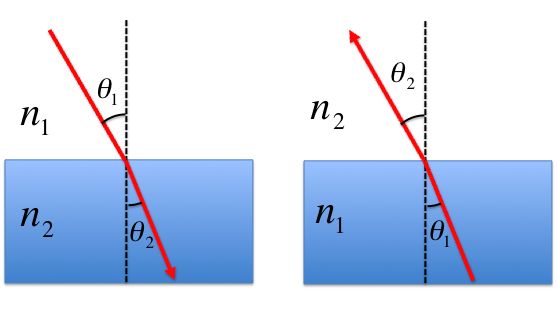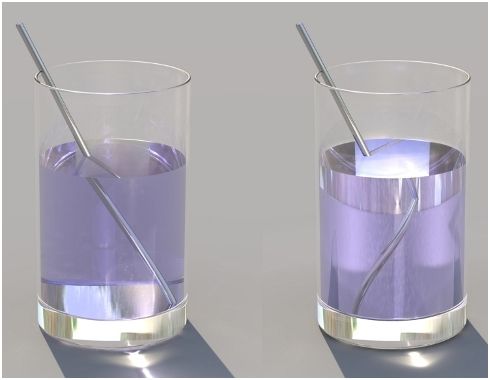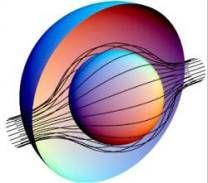| Metamaterials and the positives of a negative refractive index | 13/07/2015 |
Metamaterials and the positives of having a negative refractive indexMetamaterials are materials that are engineered to have properties that may not be found in nature. They are assemblies of multiple individual elements, usually in repeating patterns, incorporating structural elements of sub-wavelength sizes. These properties, interestingly, are created by the design of the structures rather than the composition. A fascinating property that metamaterials can have is a negative refractive index, something that does not actually occur naturally. The refractive index is defined as the speed of light in a vacuum divided by the speed of light in the medium, it is a way to compare how fast light travels through a substance. It can be calculated a multiple of different ways, the usual way by using a known refractive index of another medium and measuring the angle of incidence and the angle of refraction so n1 x sin(i) = n2 x sin(r), air is always 1 so this is a simple task. The refractive index is different for every material and is usually between 1 and 2 for most natural materials. If the light goes from a less optically dense material to a more optically dense material, the light will bend towards the normal. It will bend away from the normal if it travels from a more optically dense to a less optically dense material. However, a synthesised material can have a negative refractive index, so the light actually bends in the opposite direction. As stated before, a different way of calculating the refractive index is by taking the square root of the permittivity times the permeability, which is how a negative refractive index can be obtained. The permeability of a material is a measurement of the influence the material has on magnetic flux. Permittivity is the how well a substance can store electrical energy.
Metamaterials can be used to manipulate visible light and other electromagnetic waves, bending them around an object, to effectively cloak it, making it invisible. If light cannot reach the object, we cannot see it.
You may now be thinking, invisibility? Cool! Where is my invisibility cloak like in Harry Potter? Sadly, this is unlikely to ever happen. It is true scientists can now successfully cloak objects on a surface from electromagnetic waves, but the waves are in the microwave region, not the visible light region. Although this is slightly disappointing, metamaterials still have many exciting applications in making super lens', broadband and solar cells. Emily Coleman Images: |
|
Make a comment on this article
All comments are vetted before being published on this page
Comments
Be the first to write a comment on this article





